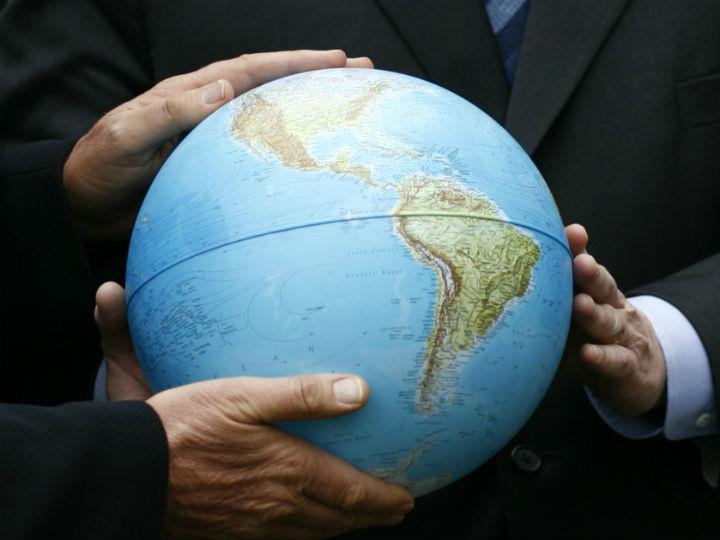by Dimitris Karamitsos, Thomas Motmans and Veronica Corno*
The rising global population and continuous economic growth are driving an increasing demand for energy. Global energy consumption is expected to nearly double by the year 2050, further enhancing the challenge to cope with climate change.
A report from the International Energy Agency shows that end-use energy efficiency alone could deliver 35% of the cumulative CO2 savings through 2050 required to meet the climate goals of the Paris Agreement.
Although energy-efficient technologies are available and their economic benefits are clear, there are several barriers that prevent these from being deployed, including high up-front costs, perception of greater performance risk, and other investment priorities.
The servitisation business model overcomes these barriers. It represents an effective way to accelerate the investments in energy-efficiency needed to deliver the Paris Agreement goals for achieving a low-carbon economy, while also helping the economy to recover faster from the COVID-19 pandemic.
What is servitisation?
With a servitisation model, the customer pays a fixed fee per unit of service consumed, while the ownership of the system remains with the technology provider, who remains responsible for all operation costs. As such, the model strongly incentivises the equipment owner – that is, the service provider – to think long-term when designing and selecting the technology. By offering state-of-the-art maintenance, the provider can minimise operating costs, in particular energy use, which is the largest cost component over the life cycle of the equipment. Keeping ownership of the equipment also encourages service providers to rethink the development of modular systems, which is key to a circular economy.
Servitisation is not new; its adoption is growing rapidly across many industries. The figure below illustrates some sectors where the model has already been applied. Examples include the printing company Xerox that offers ’pay-per-copy’, and SunEdison, which has pioneered power purchase agreements (PPAs) for solar photovoltaics (PV); this enables rapid uptake of solar PV by allowing customers to purchase solar energy instead of investing in the panels themselves. Lighting company Signify has also adopted the model with their light-as-a-service product, which has been implemented at Amsterdam’s Schiphol Airport and other locations.
Mainstreaming servitisation for cooling
The Economist Intelligence Unit predicts the cooling market will grow from $135 billion to $170 billion annually by 2030. Air conditioning alone accounts for 10% of global electricity consumption – equivalent to 2.5 times the electricity used by the whole of Africa, and if inefficient systems are not replaced, demand is expected to triple in the next 30 years.
To tackle the latter, BASE - Basel Agency for Sustainable Energy, a Swiss not-for-profit foundation and a specialised partner of the United Nations Environment Program, launched the Cooling as a Service (CaaS) Initiative in collaboration with the Kigali Cooling Efficiency Program (K-CEP) in 2018. The initiative aims to mainstream the pay-per-use model around the world to accelerate market adoption of sustainable cooling solutions. In 2019, the model was endorsed by the Global Innovation Lab for Climate Finance as one of the most innovative tools for climate finance.
Through CaaS, the cooling industry is on the brink of a revolution that will help achieve global climate targets and sustainable economic growth. CaaS enables customers to leap-frog to the best solutions available in their markets. It can be applied to a wide spectrum of sectors from the manufacturing industry, real estate, hospitality and healthcare to the cold-chains necessary for food and health. In fact, its application has already demonstrated the significant benefits of the model. In Nigeria, the implementation of CaaS in solar off-grid refrigeration for the agriculture sector is providing cooling services to local farmers, yielding a 50% reduction in food waste, increased revenues and saving 460 tonnes of CO2 per year by removing the need for diesel generators and the bad refrigerants typically used in the region. Meanwhile, in India, CaaS enabled a large real estate complex to access state-of-the art cooling services while reducing their energy consumption by more than 30% without upfront investments.
Today, CaaS is saving more than 68 GWh of electricity and saving 36,000 tonnes of CO2 emissions annually - equivalent to more than 50,000 return flights from London to New York. This equates to more than 500,000 tonnes of CO2 equivalent over the 15-year contractual lifetime of these projects. Interest in the model has been growing significantly, and the CaaS Alliance – a group of organizations committed to pursuing the implementation and mainstreaming of the CaaS model worldwide – has today over 50 members, including major technology providers.
The servitisation model is a key contributor to the systemic efficiency approach to attain global energy decarbonization. Being applicable to any type of equipment required for the operation of buildings and other city infrastructure (such as e-mobility), the potential of servitisation as a facilitator for rapidly accelerating the transition to sustainable infrastructure is enormous. Furthermore, the deployment of energy efficient and state-of-the-art assets at scale stimulated by this pay-per-use model strengthens the existing synergies with renewable solutions and enables their accelerated deployment: peak demand on the electrical grid is curved by lower demand from more efficient equipment, while the latter increases the feasibility of renewables in comparison to fossil-fuel sources of energy.
Servitisation strongly fosters innovation as well. Under a pay-per-use model, it makes business sense for a service provider to seek innovative ways to increase efficiency, maximise the use of equipment and reutilisation of components, thereby aligning the interests of people, businesses and the planet. These innovative approaches might take many forms, including improved preventive maintenance, rethinking system design, incorporation of IoT and AI technologies, and using a systemic approach when serving customers.
Letting market mechanisms, via servitisation, promote efficiency as a good business opportunity is especially important as the world recovers from a global pandemic. Servitisation can play a key role in helping cash-constrained businesses to regain momentum, while reducing operating expenses and climate impact.
*Senior Energy Efficiency Business Developer Specialist, Basel Agency for Sustainable Energy (BASE) and Sustainable Energy Finance Specialist, Basel Agency for Sustainable Energy (BASE) and Climate Finance Project and Communications Officer, Basel Agency for Sustainable Energy (BASE)
**first published in: www.weforum.org




 By: N. Peter Kramer
By: N. Peter Kramer
